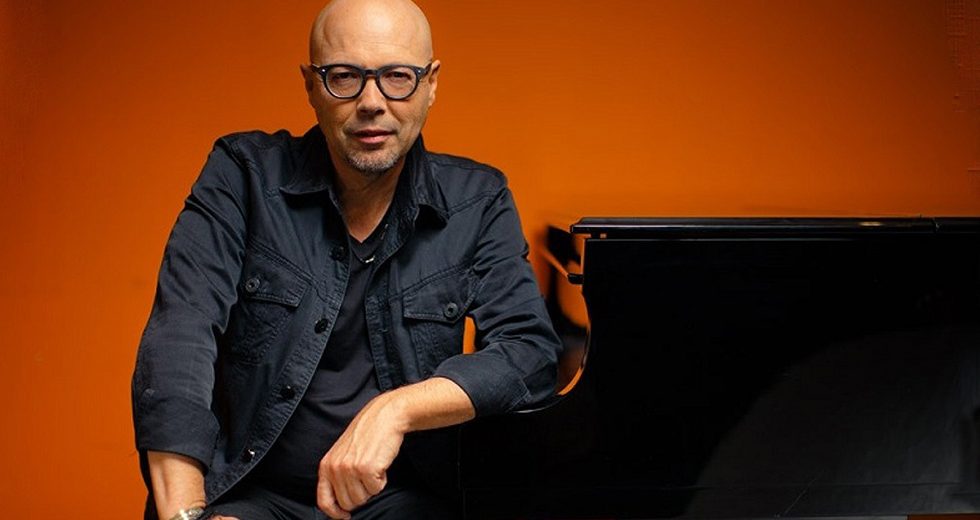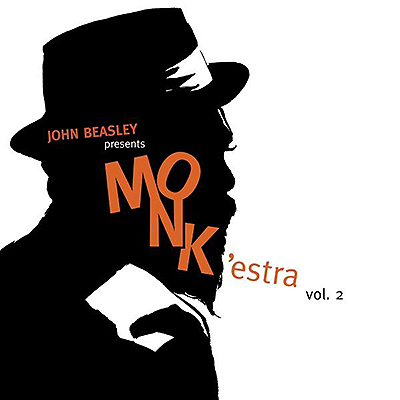
John Beasley gets his best ideas using two tools: his iPhone and a pair of walking shoes.
Both were essential while composing his Grammy-nominated album “MONK’estra, Vol. 2” (Mack Avenue), a second volume of new works that reimagine Thelonious Monk melodies within a big band setting. Beasley, a pianist, conductor and arranger as well as composer, would take breaks to take long walks. Suddenly, a song’s complete architecture would appear, which he would sing into his phone to transcribe later.
“Once I’d input it in, it would lead to another rabbit hole,” he said, laughing. Thanks to his live band, the experimental process had grounding. Beasley found himself writing for specific musicians, which would then give him the opportunity to hear playback immediately. The project evolved into a time machine that collected ideas born more than 60 years ago with those that hint at other flavors: Afro-Cuban rhythms, hip-hop, New Orleans funk. (Beasley’s Monk’estra with special guest Grégoire Maret on harmonica appears at Orchestra Hall for an SCP Jazz concert Jan. 26; opening is tenor saxophonist Melissa Aldana.)

John Beasley’s latest Monk’estra release has been Grammy-nominated in the categories of best large jazz ensemble album and best instrumental arrangement.
Beasley’s MONK’estra project is ambitious. It involves a 16-piece big band, plus numerous special guests: tenor saxophonist Kamasi Washington, singer Dianne Reeves, jazz violinist Regina Carter, trumpeter Dontae Winslow, among others. They serve as dynamic instruments to help recast Monk melodies away from their original bebop framework to new and often unexpected territories. The first volume, released in 2016, was also Grammy-nominated; the current set is up for best large jazz ensemble and best arrangement awards.
Beasley says Monk’s music lends itself to such playfulness because “he harmonically leans toward the 20th century.” “His music is very pliable as well as audacious and playful, so it sets up a template to be able to incorporate contemporary rhythms that combine with that 20th-century harmony.”
Even though he didn’t intend it, he acknowledges that both MONK’estra volumes also serve as ways to introduce young people to Monk’s work. The genre-flipping is a natural fit for a generation used to swiping through decades of music on their phone. “Young people are doing the same thing they’ve always done, having one foot forward and one foot in the past,” he said.
Beasley, 57, has the credentials to dabble with a late master’s works. His resume includes stints with several other jazz icons: as a keyboardist for Freddie Hubbard and Miles Davis, as well as Sergio Mendes, Herbie Hancock, Chaka Khan, Steely Dan and many others. His year-long stint with Davis came when Beasley was only 28. He recalls being floored at the dedication Davis showed toward every manner of his work, even at such a late stage in his career.
“We would be on the road, and he would listen to every concert off a board tape every night and have comments for everybody. He would keep tweaking it,” Beasley said. “In hotel room, he would be painting a canvas on the floor and then go to his couch and practice his trumpet. He would talk to valet about designing clothes. It seemed to be constant art all the time.”
Beasley understands the allure of being pulled in different directions. Besides his jazz credentials, he also is a successful film composer and performer (the James Bond films “Spectre” and “Skyfall” as well as “Finding Dory,” among others), and music director for such pop franchises as “American Idol.”
The Monk project remains his standing passion. Besides the Chicago performance, he will debut a cinematic presentation of the music at Walt Disney Hall in Los Angeles on March 9, which will feature archival footage of Monk himself “playing” alongside the band.
His Chicago performance will have a set list but he is open to “scorching it,” depending on the crowd. “I know it’s a symphony hall, but I hope people will get up and shake their booty a little bit and clap along,” he said. “I love that.”
Chicago-based journalist Mark Guarino writes for the Guardian, Crain’s Chicago Business, the Washington Post, Salon, the Chicago Tribune, Reuters, Agence France-Press and other outlets.